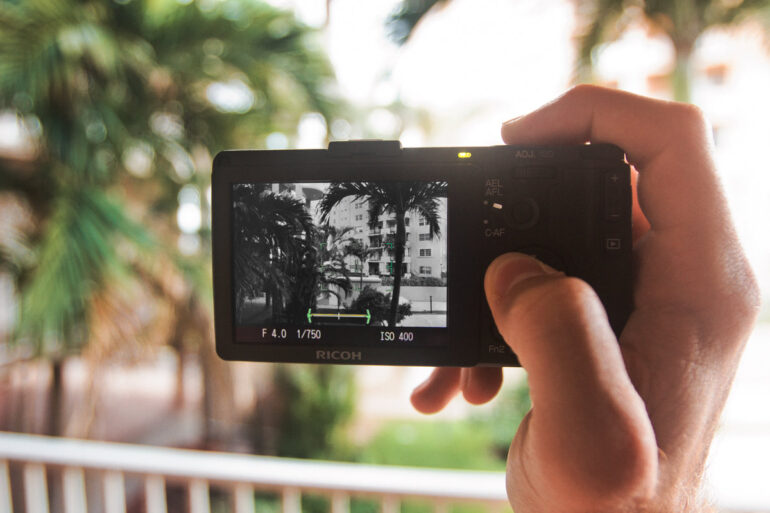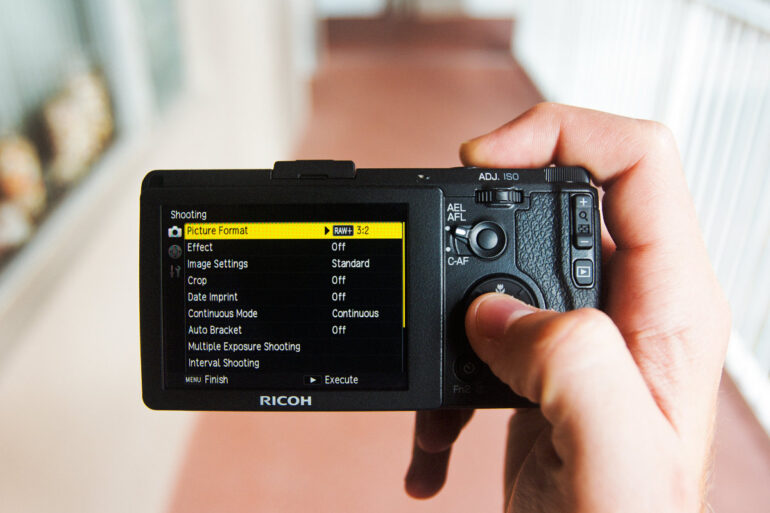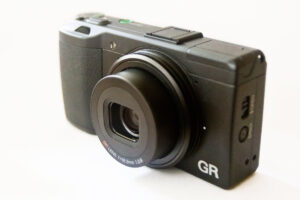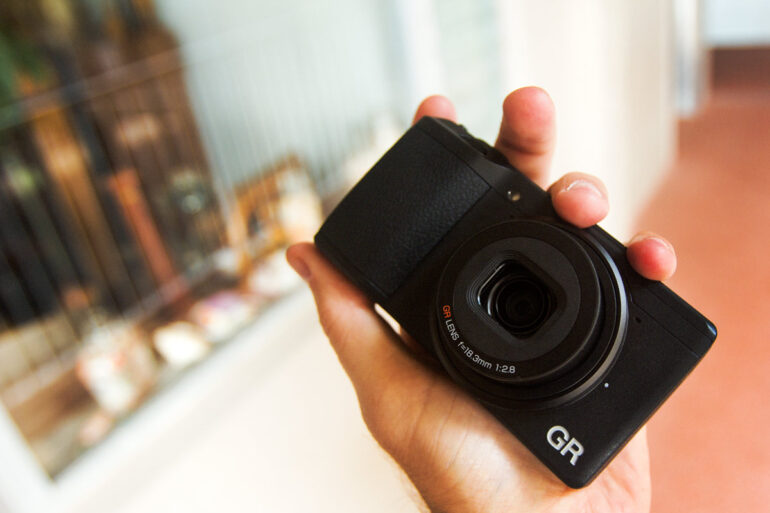We may earn a commission when you purchase through affiliate links. Learn more.
Want All of the Latest Info on the Entire Ricoh GR Series of Compact Cameras?
The original article below provides a comprehensive review of the Ricoh GR, released in April 2013. If you’re here in 2025 looking for an overview of the full lineup of Ricoh GR advanced compact cameras, including the earliest GR Digital to the latest Ricoh GR III, IIIx and HDF versions, check out our FULL GUIDE to the Ricoh GR camera family, renowned for incredible quality and unbeatable portability.
Click the button below to visit this updated guide for all the details about new features, improvements, and why the Ricoh GR camera series continues to be a standout in the world of street and travel photography:
I’ve never really been the kind of photographer who would consider leaving their DSLR at home in favor of bringing along a compact camera. Even though DSLR cameras and their lenses are typically large, heavy, and not at all inconspicuous, I’ve always felt that the improved image quality that comes with the large sensors found on DSLR cameras makes a sore neck worthwhile. Anytime I’ve taken a nice photo with a compact camera, I’ve always been left with this feeling of slight regret — if I only had a better camera with me at the time my photo would be even nicer, would have less noise, could be printed larger, etc…
The Ricoh GR is my white whale — it serves up that DSLR quality in a pocket sized body, and for the first time I’m left feeling that I’m holding something that I could bring along on a trip and not feel any regret that I’ve left the DSLR behind. Priced far below $1000, it’s also nice to know that I’m not holding something that costs more than my first car did.
Ricoh GR Features and Specifications
The Ricoh GR features a 16.2 megapixel APS-C sized sensor and an 18.3mm f/2.8 fixed lens — the equivalent of a 28mm lens on a full frame camera. At just 8.6 ounces the Ricoh GR is exceptionally light, but the body is constructed of magnesium alloy and doesn’t look particularly flashy, borrowing its unassuming looks from the Ricoh GR series, high-end compact film cameras produced during the 90s and early 2000’s. The Ricoh GR’s ISO range is especially wide, from 100-25,600, with higher ISO speeds producing very acceptable results that rival many DSLR cameras. A 4fps continuous shooting speed is a handy feature that will appeal to both street photographers and soccer moms, though sustained shooting at 4fps beyond the first 4 shots is only available when shooting JPEG images.
A built in flash works very well for illuminating close-up shots and for more lighting options a built in hot shoe is included as well. While compact cameras are usually not known for their quick startup times, the Ricoh GR is ready to shoot in just around 1 second, a big improvement from the 2 second startup time of its predecessor.

A feature I particularly like is the dual axis electronic level that makes it very easy to keep those horizons straight. While there is no built in viewfinder, the 3 inch 1.2 million dot LCD screen is bright and easy to see in daylight. Still images can be captured in Large, Medium, Small or Extra-Small JPEG files, 12-bit RAW, or in both RAW+JPEG. RAW images are captured as DNG files, which should make it simple to open them in various editing platforms. For those who like to shoot the occasional movie, 1080p videos can be captured at 24, 25, or 30fps — a big improvement from the Ricoh GR IV which didn’t offer HD video capture at all.
In Macro Mode, photographers can get as close as 3.9 inches from their subject and the results are very good. A built in 2 stop ND (Neutral Density) filter is available in both manual and automatic modes, a great feature for additional exposure control, allowing you to reduce the intensity of the light reaching the sensor.
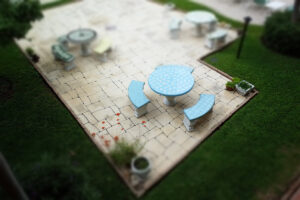
The Ricoh GR focus modes include manual focus, subject tracking, multi-area, spot, pinpoint, snap, and infinity. Snap focus allows the camera to automatically focus at a preset distance of either 1m, 1.5m, 2m, 2.5m, 5m, or infinity, especially appealing for candid street photography, a genre where one often doesn’t have the time to focus on a subject for every shot to capture fleeting moments.
A dedicated image effects button on the left side of the camera allows photographers to make use of nine built-in image effects including B&W, B&W (Toning Effect), High Contrast B&W, Cross-Process, Positive Film, Bleach-Bypass, Retro, Miniaturize, and High Key. While most photographers will prefer to apply these effects later in post processing, it’s a fun and handy feature to have, and with the button located on the side of the camera it doesn’t get in the way for photographers who don’t plan to use these effects.
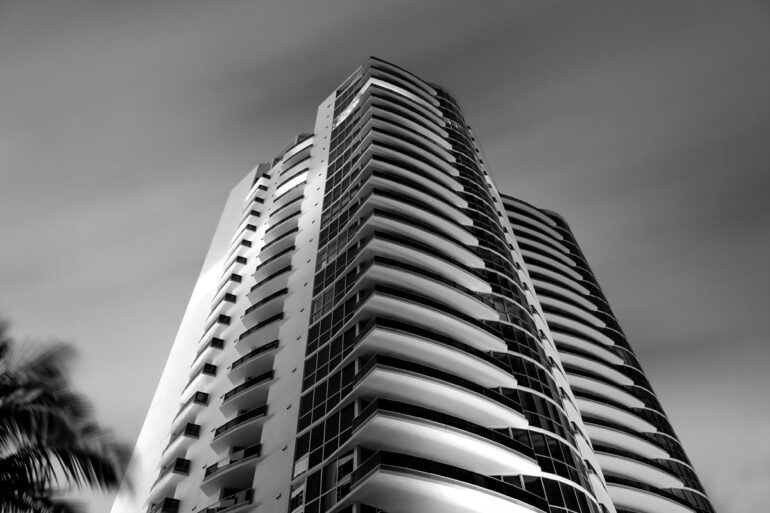
Who is the Ricoh GR for?
For the novice photographer who just wants a small, lightweight camera they can stick in their purse or pocket, the Ricoh GR fits the bill. Used on Auto mode, the camera takes outstanding photos without any learning curve. Just press the power button and you’re ready to go.
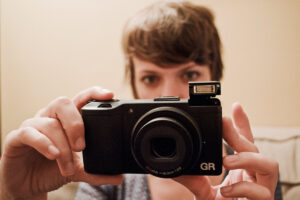 For the more advanced users who are accustomed to a DSLR, the Ricoh GR will make you feel at home as well. With an APS-C sized sensor and virtually all the features of a DSLR camera (minus the interchangeable lenses), the Ricoh GR can be as advanced as you’d like with multiple metering, focus, and exposure modes. With the camera’s small size, great image quality, speedy response, and snap focus mode the Ricoh GR is especially appealing to street photographers, many of whom have been using the predecessors (including the film versions) of this camera for many years already.
For the more advanced users who are accustomed to a DSLR, the Ricoh GR will make you feel at home as well. With an APS-C sized sensor and virtually all the features of a DSLR camera (minus the interchangeable lenses), the Ricoh GR can be as advanced as you’d like with multiple metering, focus, and exposure modes. With the camera’s small size, great image quality, speedy response, and snap focus mode the Ricoh GR is especially appealing to street photographers, many of whom have been using the predecessors (including the film versions) of this camera for many years already.
In short, the Ricoh GR is for anyone who loves to see the world at 28mm. There are enough features to keep even the most pixel-peeping, tech loving photographer happy, while also keeping everything simple enough to use for beginners who have never used a camera with advanced features and options. The menu system is one of the simplest I’ve seen and doesn’t require a consultation with the manual to figure out.
Ricoh GR Appearance and Feel
The Ricoh GR is perhaps not the beauty queen of the camera world. With a lightweight, matte-black body, if you handed this camera to someone without any photography knowledge, they’d be unlikely to realize that they were holding a very advanced (and somewhat pricey) camera. While these unassuming looks might not appeal to those who want a camera that doubles as a fashion accessory, I think that the Ricoh GR’s design is a major benefit to its target market. It’s not shiny and doesn’t stick out, making it perfect for street photography and taking candid shots. A DSLR tends to be pretty obvious and makes blending in and taking candid shots tricky.
For traveling, it may just be the ideal compact camera — feature rich, but with a look that doesn’t scream “I’m expensive!” the way many of the compact cameras from some of the major brands do. There’s no big brand name or logo on the front of the camera — it simply says GR. The small size of this camera allows photographers to observe and capture a scene without drawing attention.
The buttons and dials are well positioned on the Ricoh GR. With any new camera it takes a little time to get used to the position of all the controls, but they are pretty intuitive on the Ricoh GR and don’t take much time to figure out and memorize. Ergonomically, the camera is easy and comfortable to hold with one handed operation being simple.
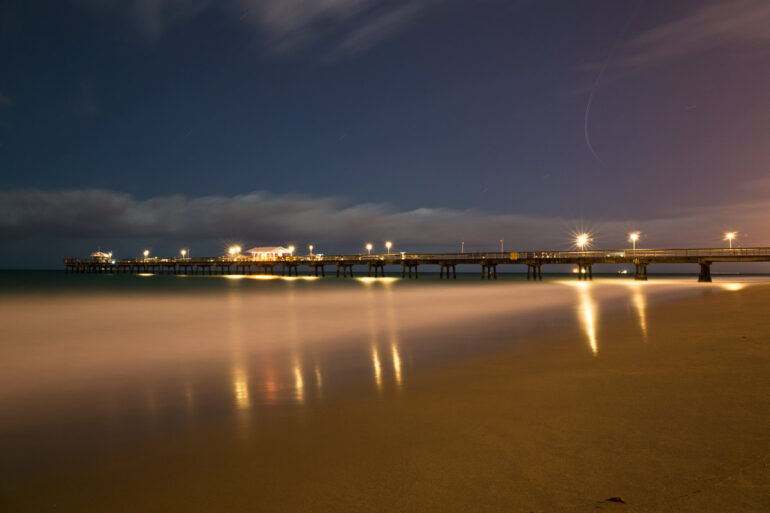
Ricoh GR Performance
Shooting with the Ricoh GR is like shooting with a DSLR, minus the large size and heavy weight. The camera responds quickly with a startup time of 1 second and a shutter lag of just .2 seconds.
In continuous shooting mode the Ricoh GR allows you to shoot JPEG images at 4fps until your memory card fills up. If you’re shooting RAW though, the camera’s buffer can only handle 4 frames before the shooting rate slows — this is clearly not a camera intended for sports photographers, although it performs very admirably when shooting JPEGs.
Noise performance from ISO 100 to 400 is excellent with ISO 800-3200 still being very usable. At ISO 6400 and above the images still look good, especially for a compact camera, but the noise becomes more obvious. ISO 25,600 is not a setting you’ll likely find yourself using often, but it is nice to know you can capture a reasonably presentable image in extremely low light if you need to.
In the comparison above we’ve taken a similar shot at ISO 6400 with both the 16mp Ricoh GR and an 18mp Canon T3i DSLR with a 16-35mm f/2.8L lens zoomed to a 28mm equivalent focal length. To compare the two, just move your cursor over the image. While the Canon T3i is a very capable entry level DSLR camera with a slight resolution advantage, the Ricoh GR clearly outperforms it at ISO 6400.
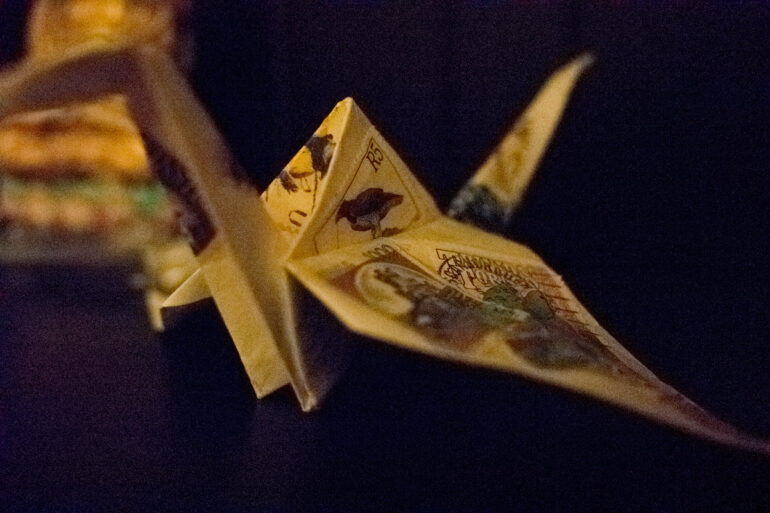
The Ricoh GR’s fixed 28mm equivalent lens is incredibly sharp, capturing fine detail with ease, even wide open at the maximum aperture of f/2.8. RAW capture offers even more control than JPEG and the images produced are truly DSLR quality.
What I Don’t Love About the Ricoh GR
The list of things I do love about this camera is long, but there are a few things I’m not crazy about and would love to see changed in a later version. Fortunately, none of them are deal breakers, but they are worth mentioning.
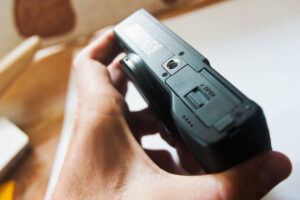 The tripod socket on the bottom of the camera body is located directly next to the battery compartment. Because the battery compartment also houses the SD memory card, exchanging memory cards or batteries while the camera is mounted on a tripod requires that the camera be removed from the tripod quick release plate. For street photographers, this is unlikely to pose a problem, since tripods are seldom used, but for others like myself who enjoy long exposure, landscape, and seascape photography as well as street photography it’s more of a noticeable issue.
The tripod socket on the bottom of the camera body is located directly next to the battery compartment. Because the battery compartment also houses the SD memory card, exchanging memory cards or batteries while the camera is mounted on a tripod requires that the camera be removed from the tripod quick release plate. For street photographers, this is unlikely to pose a problem, since tripods are seldom used, but for others like myself who enjoy long exposure, landscape, and seascape photography as well as street photography it’s more of a noticeable issue.
To charge the battery on the Ricoh GR, you’ll need to plug the included USB charging cable into it — handy if you’re in the car, but not really as convenient or quick as using a separate battery charger which you’ll need to buy separately if you want one. It seems that more and more cameras these days are coming without dedicated battery chargers and this is a trend I don’t care for. Tethering a camera to a USB cable to charge it not only takes longer, but it’s just one more thing to trip over (and I don’t like tripping on things that cost hundreds of dollars). Most serious photographers also keep multiple spare batteries on hand — without a dedicated battery charger it’s not as simple to keep them all charged. If you’re like me and you prefer to not use the USB charging cable, you can purchase a battery charger here.
Manual focusing on the Ricoh GR is possible, but to me it seems like a slow process that isn’t especially useful in most situations. To manually focus a shot, you’ll need to set the camera to manual focus mode and use the front thumbwheel to control the focusing distance, clicking through set focus points until you reach the one you want. For capturing a quick shot of a person walking down the street, this method is out, but luckily there are enough other focusing options like snap focus that the lack of a manual focusing ring on the Ricoh GR isn’t the end of the world, although it would be great to have.
Some reviewers focus on a lack of video controls as one of the major cons of the Ricoh GR — while additional video controls would be nice to have, this is a camera clearly designed for still image photographers who shoot at only one focal length, so I don’t think the camera’s movie mode should be used as a criteria to judge the camera negatively on. If anything, the fact that it shoots HD video is probably best viewed as an added bonus.
What I Do Love About the Ricoh GR
While a camera with a 28mm fixed lens isn’t going to meet the needs of every photographer out there, I’ve been finding the Ricoh GR to exceed my expectations in virtually every way. For photographers who are looking for a great advanced compact camera to use as a backup to their primary DSLR or mirrorless camera, this one is tough to beat. For those who shoot primarily wide angle shots and street photography, this may well be the only camera they need. While the shutter isn’t completely silent, it’s not much louder than a whisper — outside it’s virtually inaudible, making it the perfect camera for shooting candid photos without everyone turning to figure out where the loud shutter sound is coming from.
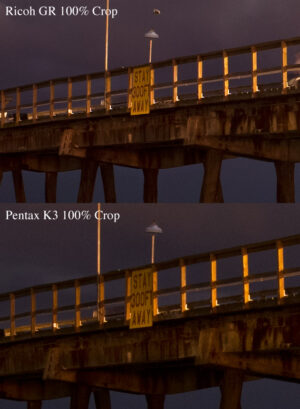 To test out the capabilities of the Ricoh GR I did a comparison test with Pentax’s latest flagship DSLR — the Pentax K3 (which also has an APS-C sized sensor), paired with the Pentax DA 18-135mm f/3.5-5.6 ED AL DC WR Lens and set to 18mm. While the Pentax K3 has a clear resolution advantage with 24 megapixels compared to the Ricoh GR’s 16 megapixels, the results are very comparable and the Ricoh GR holds its own regarding image quality. Both 30 second exposures were taken while tripod mounted and both used the exposure settings of ISO 100 and f/5. To see the 100% crops from each camera at full size just click the comparison image to the right.
To test out the capabilities of the Ricoh GR I did a comparison test with Pentax’s latest flagship DSLR — the Pentax K3 (which also has an APS-C sized sensor), paired with the Pentax DA 18-135mm f/3.5-5.6 ED AL DC WR Lens and set to 18mm. While the Pentax K3 has a clear resolution advantage with 24 megapixels compared to the Ricoh GR’s 16 megapixels, the results are very comparable and the Ricoh GR holds its own regarding image quality. Both 30 second exposures were taken while tripod mounted and both used the exposure settings of ISO 100 and f/5. To see the 100% crops from each camera at full size just click the comparison image to the right.
Currently priced at less than $700, the Ricoh GR might seem on the expensive side to those just looking for an affordable point-and-shoot to snap JPEG snapshots with, but for advanced amateurs and professionals who love shooting at 28mm and want to shoot in RAW, this camera represents an excellent value. With a large sensor and DSLR quality images, it would be difficult to find a DSLR camera and a fast 28mm lens combination that could provide similar results for a lower cost.
For street photography, the Ricoh GR is perfectly suited with it’s small size, but it’s not limited to this genre — landscape photos look outstanding, macro shots look great, and long exposure shots are superb. While many cameras require you to use a cable release or intervalometer to shoot exposures longer than 30 seconds, the Ricoh GR offers pre-set exposure times of not just 30 seconds, but also 60, 120, 240, and 300 seconds.
For traveling, the Ricoh GR is almost the perfect camera for those who won’t miss having a zoom lens. With unassuming, simple looks and a small, lightweight build this camera won’t stand out and takes up virtually no room. With its fixed lens, the Ricoh GR is designed for a pretty small segment of the camera buying marketplace, but with its robust set of advanced features and a reasonable price when compared to competing models like the Nikon Coolpix A (priced more than $400 higher than the Ricoh GR’s current price), I think it dominates this niche market.
Order the Ricoh GR from B&H Photo
